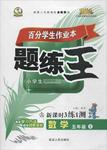题目内容
Clyde, a small-clawed otter, was moved from Auckland Zoo to Wellington Zoo two months ago. The zookeepers hoped he and the other otter Bonnie might start a family together.
But only two days after he arrived, Clyde went missing. He had dug his way under one of the walls and was nowhere to be seen.
The zookeepers set up cages inside the zoo, with plates of Clyde’s favorite fish in them, hoping to catch him. Two days went by and still there was no sign of Clyde.
At last a couple saw Clyde at their house --- a whole kilometer away in Newtown. Clyde was hiding in an out-of-reach hole outside their laundry.
The zookeepers arrived and set up some more traps to try to catch him. But Clyde is a pretty smart otter. Twice he managed to get the fish out of a trap without being caught.
Five days after he’d escaped, Clyde’s days on the run came to an end when he was finally caught in one of the traps.
It was no good putting Clyde back in his old home---he’d only dig his way out again. So he and Bonnie were put into the zoo hospital. There was no chance of their escaping from there.
Meanwhile, the zookeepers were working hard to make Clyde’s old home safer. They put an iron barrier underground to stop him digging their way out. Then Bonnie and Clyde went home again.
But a month after his first escape, Clyde was out again. Once more the zookeepers came hurrying to catch Clyde. They found him by following the bubbles he made in the river nearby.
Nobody knew how Clyde had escaped. But this time he was only out for an hour. So---back he went to the hospital again.
Poor Clyde. It seemed that he wasn’t happy at Wellington Zoo, even though he and Bonnie were getting on well together. The keepers didn’t like seeing him unhappy, so they planned to look for a home for him somewhere else.
67. Where was Clyde found after his first escape?
A. Back in Auckland Zoo. B. In a river nearby.
C. At a house a kilometer away. D. In the zoo hospital.
68. How did zookeepers catch Clyde after his second escape?
A. They set up cages in the zoo.
B. They attracted Clyde with fish
C. They dug a hole outside his home.
D. They followed the bubbles in the water.
69. What do we know about Clyde?
A. He often gets ill. B. He is good at digging.
C. He likes hiding in a hole. D. He escaped to meet Bonnie.
70. Where is the passage most likely to have been taken from?
A. A news report. B. An advertisement.
C. A book review. D. A research paper.
CDBA

 世纪百通主体课堂小学课时同步达标系列答案
世纪百通主体课堂小学课时同步达标系列答案 世纪百通优练测系列答案
世纪百通优练测系列答案 百分学生作业本题练王系列答案
百分学生作业本题练王系列答案
Clyde, a small-clawed otter, was moved from Auckland Zoo to Wellington Zoo two months ago. The zookeepers hoped he and the other otter Bonnie might start a family together.
But only two days after he arrived, Clyde went missing. He had dug his way under one of the walls and was nowhere to be seen.
The zookeepers set up cages inside the zoo, with plates of Clyde’s favorite fish in them, hoping to catch him.
Two days went by and still there was no sign of Clyde.
At last a couple saw Clyde at their house --- a whole kilometer away in Newtown. Clyde was hiding in an out-of-reach hole outside their laundry.
The zookeepers arrived and set up some more traps to try to catch him. But Clyde is a pretty smart otter. Twice he managed to get the fish out of a trap without being caught.
Five days after he’d escaped, Clyde’s days on the run came to an end when he was finally caught in one of the traps.
It was no good putting Clyde back in his old home---he’d only dig his way out again. So he and Bonnie were put into the zoo hospital. There was no chance of their escaping from there.
Meanwhile, the zookeepers were working hard to make Clyde’s old home safer. They put an iron barrier underground to stop him digging their way out. Then Bonnie and Clyde went home again.
But a month after his first escape, Clyde was out again. Once more the zookeepers came
hurrying to catch Clyde. They found him by following the bubbles he made in the river nearby.
Nobody knew how Clyde had escaped. But this time he was only out for an hour. So---back he went to the hospital again.
Poor Clyde. It seemed that he wasn’t happy at Wellington Zoo, even though he and Bonnie were getting on well together. The keepers didn’t like seeing him unhappy, so they planned to look for a home for him somewhere else.
【小题1】Where was Clyde found after his first escape?
| A.Back in Auckland Zoo. | B.In a river nearby. |
| C.At a house a kilometer away. | D.In the zoo hospital. |
| A.They set up cages in the zoo. |
| B.They attracted Clyde with fish. |
| C.They dug a hole outside his home. |
| D.They followed the bubbles in the water. |
| A.He often gets ill. |
| B.He is good at digging. |
| C.He likes hiding in a hole. |
| D.He escaped to meet Bonnie. |
| A.A news report. | B.An advertisement. |
| C.A book review. | D.A research paper. |
?Health, Wellness and the Politics of Food
9:00—9:45 a.m. Blue Tent
Panelists (成员):Jami Bernard, David Kamp, Marion Nestle and Peter Singer.
Hosted by Denise Grady, science writer for The New York Times.
How does what we eat not only affect our bodies, but also the world?The food and nutrition experts debate the role that the diet plays in both personal and global health, and present a look at food politics.
?Sports Writing:For the Love of the Game
9:50—10:35 a.m. Blue Tent
Panelists:Christine Brennan, Ira Rosen, Joe Wallace and Joe Drape.
Hosted by William C.Rhoden, sports writer for The New York Times.
Whether catching that key moment of victory or defeat, or covering breaking news, sports writers are anything but audience. Listen as some professionals discuss the special experience in reporting of sports news.
?The Art of the Review
11:15—12:00 a.m. Green Tent
Panelists: John Freeman, Barry Gewen, David Orr, Celia McGee and Jennifer Schuessler.
Hosted by Sam Tanenhaus, editor for The New York Times Book Review.
How much of an effect does the book review have on book sales?Join this group of critics(评论家) as they discuss the reality of book review and bestseller lists, and how they choose books for review.
?New York Writers, New York Stories
3:00—3:45 p.m.Green Tent
Panelists: Cindy Adams, Richard Cohen, Ric Klass and Lauren Redniss.
Hosted by Clyde Haberman, columnist (专栏作家) for the City Section of The New York Times.
Join this inspiring group of New York-centric writers as they talk about why New York is a gold mine of ideas for their work.
1.If you are free in the afternoon, you can attend_______.
|
A.The Art of the Review |
|
B.New York Writers, New York Stories |
|
C.Health, Wellness and the Politics of Food |
|
D.Sports Writing: For the Love of the Game |
2.If you like sports writing, you will most probably _______.
|
A.go to Blue Tent at 11:15 a.m |
B.enjoy Jami Bernard’s talk |
|
C.listen to Christine Brennan |
D.attend the Art of the Review |
3.Sam Tanenhaus is in charge of ________.
|
A.The Art of the Review |
|
B.Health, Wellness and the Politics of Food |
|
C.New York Writers, New York Stories |
|
D.Sports Writing:For the Love of the Game |
4.All the four activities above _______.
|
A.are about writing |
B.will last 45 minutes each |
|
C.can be attended freely |
D.will attract many readers |
5.We can learn from the text that________.
|
A.sports writers are a type of audience |
|
B.the New York Times is popular |
|
C.Denise Grady will discuss politics |
|
D.book reviews may affect book sales |

